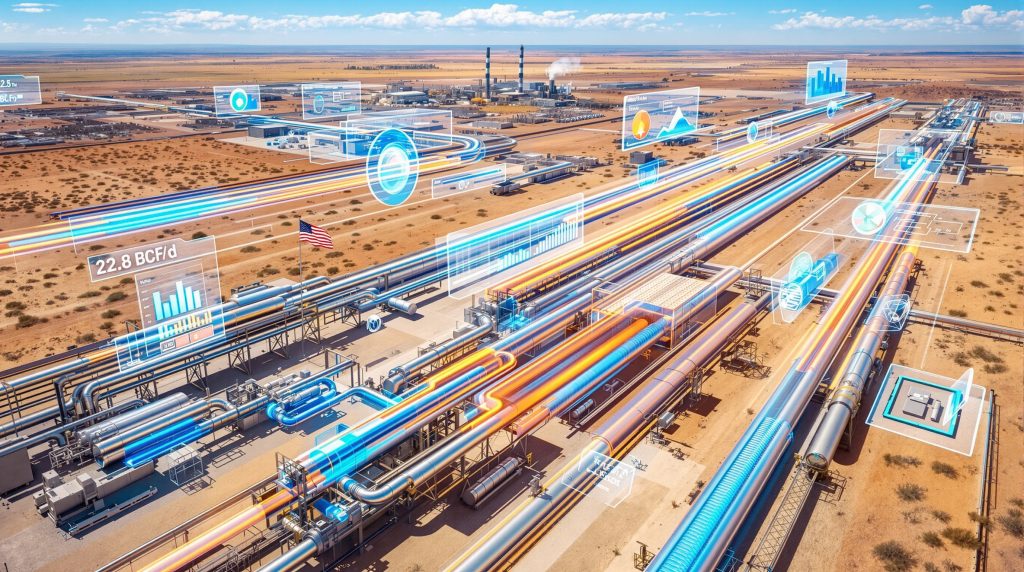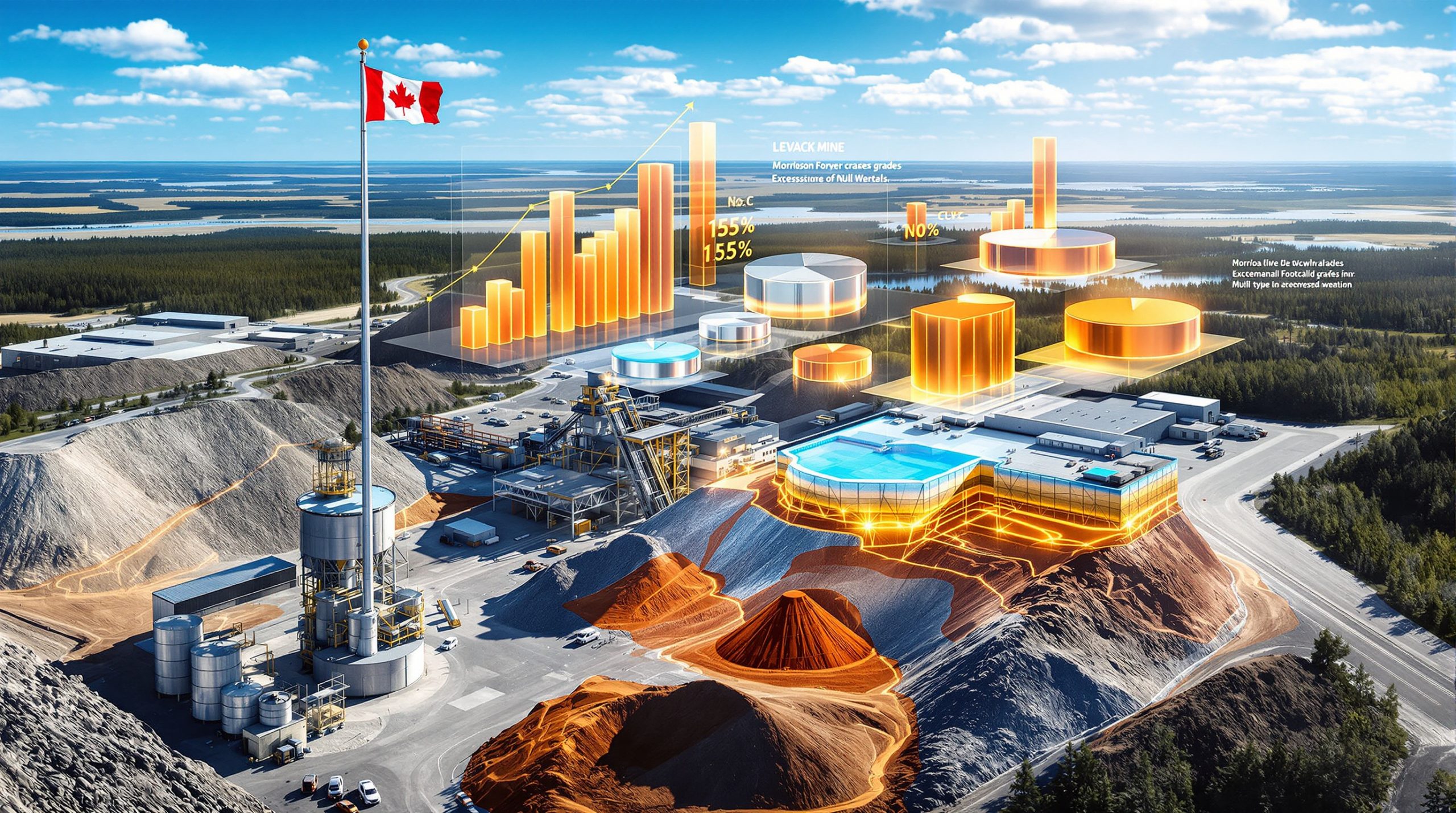Engineering Revolution Drives America's Largest Gas Infrastructure Expansion
The natural gas pipeline sector is experiencing its most significant transformation since the initial unconventional resource development began in 2008. Current infrastructure utilisation patterns reveal a system operating at capacity constraints, with flow management becoming increasingly complex as production outpaces transportation capabilities. Emergency protocols activate when demand spikes exceed available capacity, forcing operators to implement costly mitigation strategies including controlled flaring and negative pricing mechanisms.
Recent analysis indicates the U.S. Gulf Coast region faces a fundamental infrastructure challenge. Twelve major pipeline projects scheduled for completion represent the most substantial single-year capacity expansion in over fifteen years, delivering a 13% increase in regional transportation capability. This expansion addresses critical bottlenecks where production centres cannot efficiently deliver gas to consumption hubs.
Furthermore, the Permian Gas Wave Sparks Biggest Pipeline Buildout represents a paradigm shift in American energy infrastructure development. This unprecedented expansion responds to growing US economic outlook and industrial demand patterns.
Infrastructure Capacity Analysis
Pipeline utilisation data reveals systematic stress across the network. The Waha gas hub in West Texas has recorded negative pricing events as producers pay to dispose of excess gas when transportation options become unavailable. These pricing inversions signal severe infrastructure constraints rather than demand weakness.
Industry analysis confirms that $50 billion in committed pipeline investments will add 8,800 miles of new infrastructure. This represents a fundamental shift from previous expansion cycles, where producer-led development connected low-cost resources to existing markets. Current buildout responds to demand-pull dynamics from industrial consumers, export facilities, and power generation requirements.
TC Energy projections indicate North American natural gas demand will increase by 45 billion cubic feet per day by 2035. This forecast incorporates tripling LNG export capacity and unprecedented electricity demand from data processing facilities and manufacturing reshoring initiatives.
Advanced Pipeline Engineering Solutions Transform Transportation Networks
Modern pipeline development incorporates sophisticated flow optimisation technologies that adapt to volatile production patterns characteristic of unconventional resources. Unlike traditional fixed-capacity systems, new infrastructure features modular designs enabling real-time capacity adjustments without efficiency penalties.
Smart flow management systems integrate predictive analytics with automated pressure control across thousands of miles of pipeline networks. These systems process real-time data from production facilities, compression stations, and delivery points to optimise throughput while maintaining operational safety margins. In addition, data-driven operations enhance decision-making processes across the industry.
Modular Infrastructure Design
Contemporary compression stations utilise variable-speed electric drives allowing output modulation between 40-60% of maximum capacity. This flexibility accommodates the rapid production decline curves typical of unconventional wells while maintaining system efficiency during off-peak periods.
- Variable frequency drives enable real-time motor speed adjustment
- Predictive maintenance systems monitor equipment condition continuously
- Remote monitoring capabilities reduce operational costs
- Modular expansion allows capacity scaling without system redesign
Advanced compression technologies achieve efficiency ratings between 88-96% depending on drive configuration. Electric variable frequency drive systems demonstrate superior performance metrics with 8,760-hour maintenance intervals and full automation capabilities.
Engineering Project Examples
The ExxonMobil acquisition of a 40% stake in Enterprise Products Partners' Bahia natural gas liquids pipeline demonstrates industry commitment to integrated transportation solutions. This Cowboy Connector Pipeline project connects Permian production directly to Gulf Coast refining and chemical facilities while enabling export market access.
Pipeline engineering now incorporates bi-directional flow capabilities, allowing seasonal demand optimisation and emergency rerouting during maintenance periods. These systems feature automated switching mechanisms and quality monitoring stations positioned at strategic intervals throughout the network.
Specialised Infrastructure Requirements for Industrial and Export Applications
Data processing facilities require ultra-reliable gas supply with strict pressure stability parameters. These installations consume gas at steady baseload rates typically ranging from 0.8-1.2 million British thermal units per megawatt, creating predictable demand patterns that enable pipeline optimisation.
Technical specifications for data centre supply include pressure variations limited to ±2%, supply reliability exceeding 99.95% uptime, and response times under 15 minutes for demand changes. Backup capacity requirements typically specify 150% of peak demand to ensure uninterrupted operations.
LNG Terminal Engineering Complexities
Liquefied natural gas facilities present unique infrastructure challenges due to massive scale and precise operational requirements. Single processing trains typically require 0.5-0.7 billion cubic feet per day of feedgas with strict quality specifications for heating value, moisture content, and contaminant levels.
LNG terminal specifications demand feedgas quality between 1,050-1,150 British thermal units per standard cubic foot heating value, moisture content below 7 pounds per million standard cubic feet, and hydrogen sulfide limits under 4 parts per million. Processing capacity can reach 4.2 billion cubic feet per day per facility.
However, the LNG market implications extend beyond infrastructure requirements to global supply chain dynamics.
| Facility Type | Gas Consumption | Reliability Requirement | Quality Specifications |
|---|---|---|---|
| Data Centres | 0.8-1.2 MMBtu/MW | 99.95% uptime | Standard pipeline quality |
| LNG Terminals | 0.5-0.7 Bcf/d per train | 99.5% availability | 1,050-1,150 Btu/scf |
| Chemical Plants | Variable demand | 98% reliability | Process-specific |
U.S. LNG exports continue reaching record levels with additional export facilities expected to commence operations before decade end. This expansion drives demand for dedicated high-capacity feedgas pipelines connecting production areas to coastal processing facilities.
Variable Production Patterns Drive Compression Technology Evolution
Unconventional gas production exhibits significant volatility requiring adaptive compression strategies. Modern compression stations integrate variable-speed electric drives enabling real-time output adjustment without mechanical modifications or efficiency degradation.
Variable frequency drive technology adjusts voltage and frequency supplied to AC motors, allowing precise output modulation. These systems can modify compression capacity by 40-60% while maintaining optimal efficiency ratings throughout the operating range.
Advanced Compression System Performance
| Technology Configuration | Efficiency Range | Maintenance Interval | Automation Level |
|---|---|---|---|
| Electric VFD Systems | 92-96% | 8,760 hours | Full automation |
| Gas Turbine Drives | 88-92% | 6,000 hours | Semi-automated |
| Reciprocating Units | 90-94% | 4,380 hours | Manual override |
Predictive maintenance systems utilise vibration analysis, thermal monitoring, and performance trending to identify potential equipment issues before failure occurs. These systems can reduce unplanned downtime by 35-40% while improving overall system efficiency by 8-12%.
Remote operation capabilities enable centralised monitoring and control of multiple compression facilities from single control centres. Automated shutdown systems activate within seconds when operational parameters exceed safe thresholds, preventing equipment damage and environmental releases.
Multi-Commodity Pipeline Systems Present Complex Engineering Challenges
Integrated pipeline systems transport both raw natural gas and extracted natural gas liquids simultaneously, maximising infrastructure utilisation while reducing capital requirements. These systems incorporate sophisticated separation and processing capabilities enabling real-time product optimisation during transport.
Inline fractionation units enable ethane and propane separation during pipeline transport, eliminating the need for separate processing facilities. Quality monitoring stations positioned every 50-100 miles ensure product specifications remain within required parameters throughout the transportation process.
Processing Technology Integration
Modern pipeline systems integrate field processing equipment directly into transportation infrastructure, enabling continuous gas conditioning and natural gas liquid extraction. This approach reduces overall project costs while maintaining strict product quality standards.
- Dedicated NGL pipeline networks utilise 8-16 inch diameter systems
- Automated switching systems enable product routing optimisation
- Integrated vapour recovery units minimise emissions
- Real-time quality analysis ensures specification compliance
Multi-commodity systems require specialised engineering to handle different product characteristics, flow rates, and quality requirements. Pipeline materials must accommodate varying pressures, temperatures, and chemical compositions while maintaining long-term operational reliability.
Regulatory Engineering Standards Shape Modern Pipeline Design
Pipeline engineering must incorporate comprehensive safety and environmental protection systems significantly impacting design complexity and capital costs. These systems include automated leak detection, emergency shutdown capabilities, and continuous environmental monitoring.
Mandatory safety engineering features require computational pipeline monitoring systems, automated valve closure mechanisms responding within 30 seconds, cathodic protection for corrosion prevention, and seismic monitoring with automatic shutdown triggers.
Emissions Control Integration
Advanced emissions reduction technologies include vapour recovery units, low-emission pneumatic devices, and methane detection systems. These technologies typically add 12-18% to capital costs but ensure regulatory compliance and operational sustainability.
Safety engineering standards mandate multiple redundant systems including emergency block valves, pressure relief systems, and fire suppression equipment. Pipeline routes must avoid sensitive environmental areas while incorporating wildlife crossing structures and habitat protection measures.
Regulatory approval processes require comprehensive environmental impact assessments, stakeholder consultation programs, and long-term monitoring commitments. Projects must demonstrate compliance with federal, state, and local regulations throughout their operational lifecycle.
Investment Models Drive Strategic Pipeline Development Decisions
Pipeline developers utilise sophisticated economic models incorporating multiple revenue streams including transportation fees, processing margins, and capacity optimisation services. These models account for 20-30 year operational periods with varying demand scenarios and regulatory changes.
Investment decision metrics target internal rates of return between 12-15% minimum, net present values ranging $2-4 billion for major projects, payback periods of 8-12 years, and capacity utilisation breakeven points at 65-70%.
For instance, the Permian Gas Wave Sparks Biggest Pipeline Buildout reflects strategic investment alignment with market fundamentals. The US natural gas forecast supports this infrastructure expansion through projected demand growth.
Revenue Optimisation Strategies
Contemporary pipeline operators implement dynamic pricing models, seasonal capacity auctions, and interruptible service contracts to maximise revenue while maintaining system reliability. These strategies can increase revenue by 15-25% compared to traditional fixed-rate approaches.
- Firm transportation contracts provide guaranteed revenue streams
- Interruptible services offer premium pricing during high-demand periods
- Processing services generate additional margin opportunities
- Storage integration provides seasonal optimisation benefits
Capital allocation frameworks evaluate projects based on strategic importance, risk profiles, and synergistic opportunities with existing infrastructure. Developers prioritise projects serving multiple markets and customer segments to enhance long-term viability.
Artificial Intelligence Transforms Pipeline Operational Efficiency
AI systems analyse real-time data from thousands of sensors throughout pipeline networks to optimise gas flow, predict maintenance requirements, and prevent operational disruptions. These systems improve overall efficiency by 8-12% while reducing unplanned downtime by 35-40%.
Machine learning algorithms process historical production data, weather patterns, and demand forecasts to continuously optimise pipeline operations. These systems learn from operational patterns to improve performance and predict future requirements.
Predictive Analytics Applications
Advanced analytics enable predictive maintenance scheduling, real-time flow optimisation, automated leak detection and response, and demand forecasting with capacity planning integration. AI systems can identify potential issues days or weeks before traditional monitoring methods.
- Pattern recognition identifies equipment degradation trends
- Automated optimisation adjusts flows across multiple pipeline segments
- Predictive models forecast maintenance requirements
- Real-time analytics enable rapid response to operational changes
Furthermore, AI transformation insights demonstrate similar technological applications across energy sectors. Digital twin technology creates virtual pipeline models enabling scenario testing and optimisation without operational risks.
Long-Term Infrastructure Sustainability and Future-Proofing Strategies
Pipeline engineers design systems with flexibility to handle evolving gas compositions including higher hydrogen content and renewable gas blends. This future-proofing requires upgraded materials, modified compression systems, and enhanced monitoring capabilities.
Sustainability engineering features incorporate hydrogen-compatible steel specifications, renewable gas blending capabilities, carbon capture integration points, and electrification-ready compression stations. These modifications ensure infrastructure remains viable as energy systems transition.
Lifecycle Management Approaches
Comprehensive lifecycle management strategies include planned capacity expansions, technology upgrade pathways, and end-of-life transition planning. These approaches ensure 40-50 year operational viability while maintaining environmental compliance and economic performance.
- Modular design enables incremental capacity additions
- Technology platforms support equipment upgrades
- Materials selection considers long-term compatibility
- Environmental monitoring ensures regulatory compliance
Infrastructure developers increasingly focus on adaptability and resilience rather than simply meeting current requirements. Projects must accommodate changing energy markets, evolving regulations, and emerging technologies throughout their operational lifespans.
Consequently, the Permian Gas Wave Sparks Biggest Pipeline Buildout represents more than immediate capacity expansion—it establishes foundation infrastructure for decades of energy market evolution. Analysis from Natural Gas Intel confirms this strategic positioning addresses both current constraints and future opportunities.
"This pipeline buildout reflects fundamental shifts in American energy infrastructure, positioning the sector for sustained growth across multiple demand segments while maintaining operational excellence and environmental stewardship."
Disclaimer: This analysis presents current industry trends and technological developments based on publicly available information. Pipeline investment decisions involve significant risks and should be evaluated based on comprehensive due diligence and professional consultation. Market conditions, regulations, and technologies continue evolving rapidly in the natural gas transportation sector.
Looking to Capitalise on America's Energy Infrastructure Transformation?
Discovery Alert delivers real-time notifications on significant ASX mineral discoveries using its proprietary Discovery IQ model, helping investors identify actionable opportunities as major infrastructure developments reshape global energy markets. Begin your 30-day free trial today at Discovery Alert and position yourself ahead of the market with instant insights into the next wave of resource discoveries.




